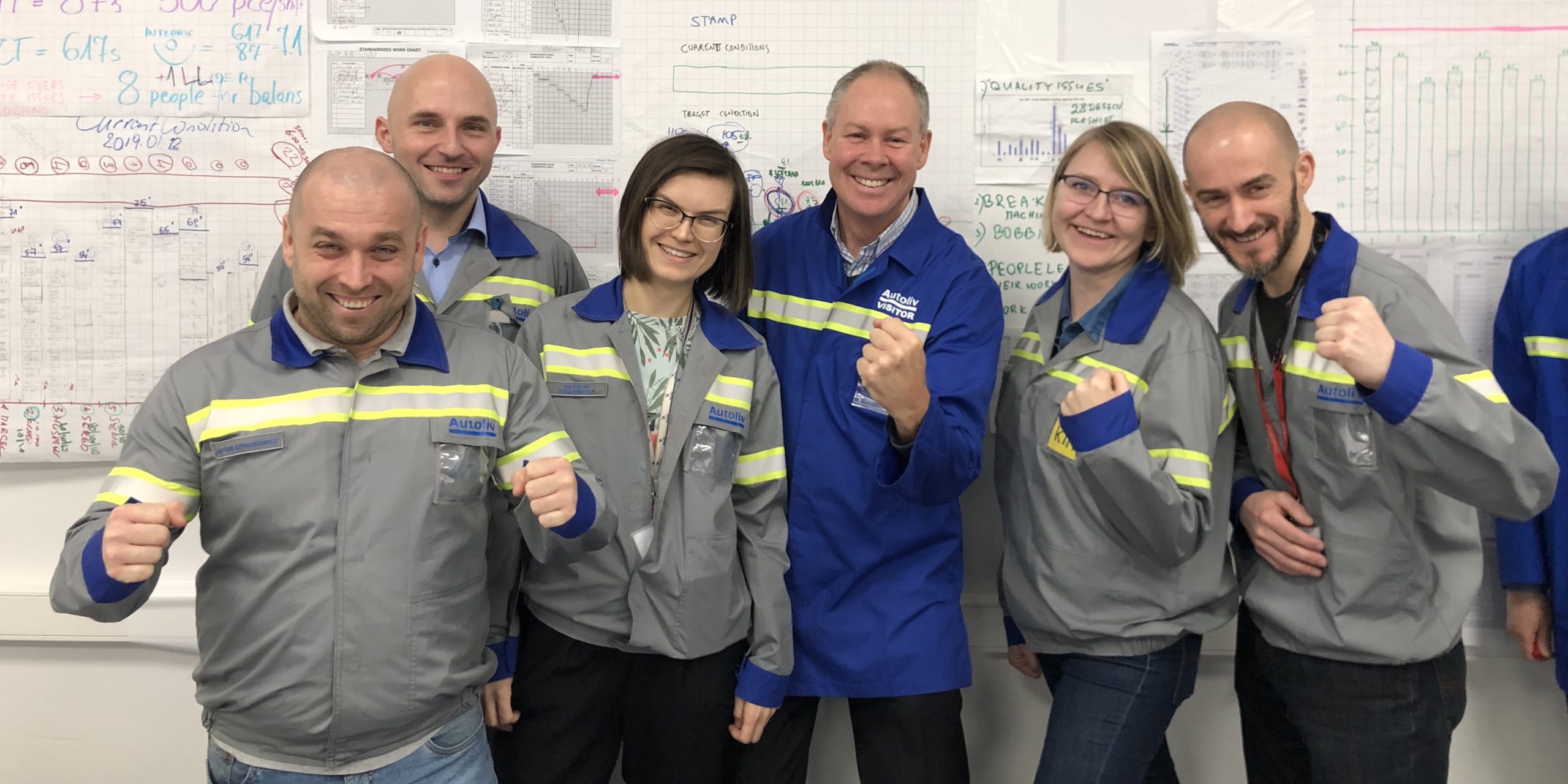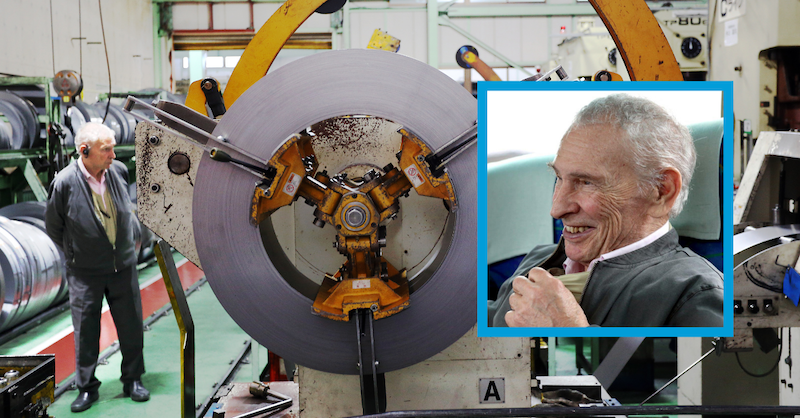
The Fire Department transforming itself and its city
INTERVIEW – Is “lean fire-fighting” an oxymoron? It isn’t if you are the Grand Rapids Fire Department, which has not only turned itself around but is also leading a city-wide lean transformation.
Interviewee: Brad Brown, Assistant Chief of Administration, Grand Rapids Fire Department – Michigan, USA
Roberto Priolo: Grand Rapids is undergoing a city-wide lean transformation. How does the lean journey of the Fire Department fit into it?
Brad Brown: The Fire Department is really at the forefront of the city’s lean initiative. We started around 10 years ago with A3s and looking at the ROI for making systemic improvements. Once we started to see some results, we went to the rest of the city and began to lead the lean transformation. We regularly teach other city departments how to think and act lean.
RP: Ten years on the journey! Can you take us through it briefly?
BB: It is incredible to think of the many things we have learned in the past decade… and of all the mistakes we have made!
We started during the economic downturn of 2008. We were not in a good place back then: we had to lay off firefighters, we were having trouble answering our over 20,000 emergency runs a year, and our infrastructure was crumbling. We were outstripping our resources. The city then reached out to a group of private-sector business professionals and asked them to help them implement lean thinking. They started with the A3 problem solving tool, one of our favorite methods to date.
Unfortunately, it was still a push system: the city was telling the department directors they had to use lean. At the time (I had just come out of fire suppression), my job was to ensure the lean mindset would “trickle down” to the troops, who didn’t want it. There was a lot of turmoil. It was only after several years of working on projects that improved our people’s every-day lives that we were able to switch to a pull system. I am really happy to say that today we have great leadership and great labor management relationship: we are all sitting at the table to solve problems together, union workers and senior leaders.
There’s more. At first, tools and techniques were at the heart of what we did, whereas now we are focusing more on the cultural side of our transformation.
RP: How has the context around you changed in the past decade?
BB: According to the US Bureau of Labor Statistics, Grand Rapids – a city of just under 200,000 located in West Michigan – is one of the fastest growing economies in the country. That means we have a lot of buildings going up at the moment, which means increased risk of fire and a higher call volume for our 11 stations and 200 firefighters. We are no longer doing lean to cut costs; now we are doing it to increase our capacity and keep pace with the environment.
RP: How did your approach to developing capabilities change over time?
BB: At the beginning of the journey, we relied a lot on outside expertise (the Lean Enterprise Institute was among those who helped us). It was a good first step to get exposure to the ideas and principles, but we realized it wasn’t sustainable. So, we decided to look around the lean community in Grand Rapids and found that our local college offered a nine-month lean certification program. It was harder than my Master’s degree, I have to say! That’s when we started to grow our own people, and now we have seven lean champions within the city. Grand Rapids is a unique environment, where firefighters teach lean to city employees (I, for one, am teaching A3 thinking) and where the transformation is pretty much self-sustaining.
RP: What can you tell me about leadership in the Department?
BB: In the past, a lot of the support to the transformation came from middle management rather than from the top. Around a year and a half ago, a new Chief came in and he is really getting involved directly. People understand that if this is important to him, it should be important to them as well. That’s when the tide turned for us, which goes to show how important it is to have leadership involvement.
RP: How did your process change?
BB: We have implemented several different processes. From a tool perspective, we ran 5S projects around the stations and applied value stream mapping for a lot of our administrative processes. But we were still disconnected with our men and women on the street. So, a few years ago, we started a daily huddle via Skype that gives all of our 11 stations 10 to 15 minutes with the Fire Chief.
Each individual work area has its own stand-up meeting as well. There are three important questions that we ask every day: What did you learn yesterday? What are you doing today? Do you need any help? As firefighters, we don't ask for help and we are used to being the ones people call to solve problems, so we have had to learn to be very explicit in asking these questions. Coupled with the Chief being more and more visible, this has given us more than all the monetary savings combined.
I remember an anecdote that shows how much things have changed. A couple of years into the journey, as we were launching our system for managing for daily improvement with our huddle boards, I remember one of our colleagues (a fire engine driver) walking into the station and saying, “Boy, if I just had one hand grenade I could take care of this place.” He was standing just outside the office I shared with my then partner. He looked inside and said, “I am talking about you two.” Fast-forward a few years later, and this is the same person who asked for a white board to go up in the apparatus bay, so that he can better keep track of his fire engine, what he needs, and transfer that information to people in the other shifts. I have at least 20-30 stories of big detractors turning into ambassadors for lean. But that didn’t happen until we started to fix their problems – not ours.
RP: How does information and knowledge travel across stations?
BB: A lot of it happens organically, even though we have 11 stations and three shifts (which really means 33 different work crews, plus 15 rigs out on the streets). When crews travel around and see something working in another station, they want it – no matter what management says.
RP: From a practical standpoint, how has your ability to fight fires improved over time?
BB: We are one of 239 accredited fire agencies in the world through the Center for Public Safety Excellence, and lean helped us to accomplish that. One of the major things we do (which happens in manufacturing all the time) is looking at critical tasking and takt time. It’s important for us to understand how quickly we need to perform certain tasks to meet customer demand. Through a lot of system mapping and critical task analysis, we now know that we can save 96% to 97% of a property if we can deploy seven rigs with 19 personnel to the fire in less than ten-and-a-half minutes 90% of the time. All this has been tested and validated over thousands of runs. Before accreditation and lean, we never would have thought to break the process down like that. The bell would go off and we’d run to the engine, drive to the fire and work hard to mitigate it. We would still do a great job, but now we have data and we can see the waste and opportunities for improvement in the process.

RP: How do you define success?
BB: In the past, success was very outcome- and metric-oriented, almost to the point that the focus was on how much money we were saving. Now I view success as people asking me to help them. Giving people the tools, coaching them and seeing their smile afterwards is what success looks like to me, and it’s a great motivator.
RP: Is it beneficial for the Fire Department to be part of a wider environment that uses lean?
BB: It is hugely beneficial! Within the city, lean practitioners have access to any department. We can call people up at any time and go see. Every few weeks, we have a different group of people coming to our gemba. Lean is very widespread in Grand Rapids, even outside city government: it’s not uncommon for me to walk down to the hospital once a month to see some lean friends over there, or swing by a manufacturing plant. It is fantastic, and we are very fortunate to have so many lean practitioners in West Michigan.
RP: Can you share some figures with us that show the impact of the lean transformation on the city’s finances?
BB: When we first got into lean, the city was running on a deficit of tens of millions of dollars. Thanks to the diligence of our Chief Financial Officer and to lean thinking, we have not only recovered, but also built up cash reserves as a city. It was a long road to get here, but now we have a sustainable model and we are ready to weather the next economic storm. It’s a great place to be, but we are only here thanks to the hard work of our employees and the support of our citizens.
THE INTERVIEWEE

Read more


INTERVIEW – What skills do coaches need to successfully support lean transformations in the service sector? Our colleagues from Australia tells us about their experience.


FEATURE – On October 31st, the Lean Movement lost one of his pioneers. In this piece, Dan Jones reflects on Freddy Ballé’s legacy.


FEATURE – The food industry is mired with problems all along the value chain. In this call to arms, the author explains why lean thinking is the only tool we have to transform it right now.


FEATURE – When it comes to the fight against climate change, we can’t expect to achieve much until we fundamentally challenge the way we think about resource consumption. Lean is our tool to do that.

